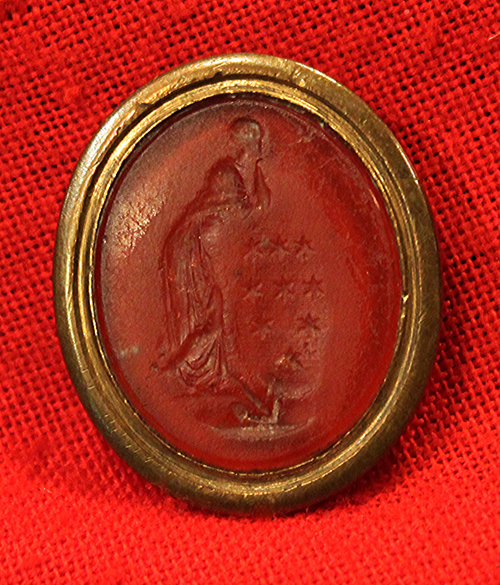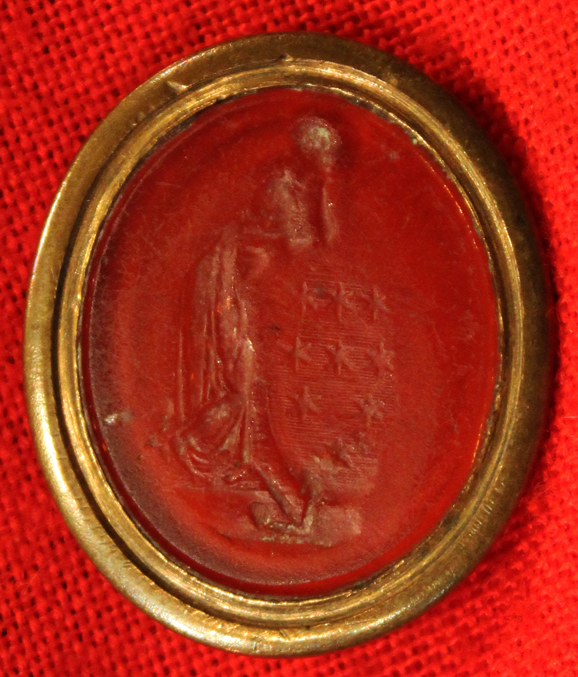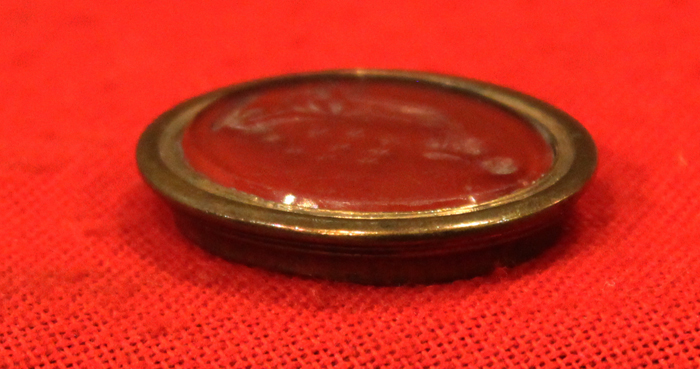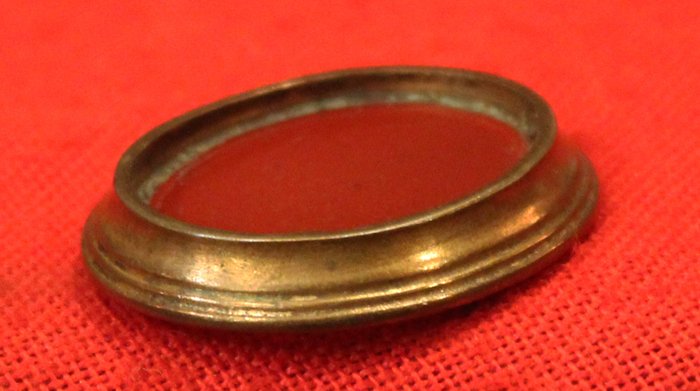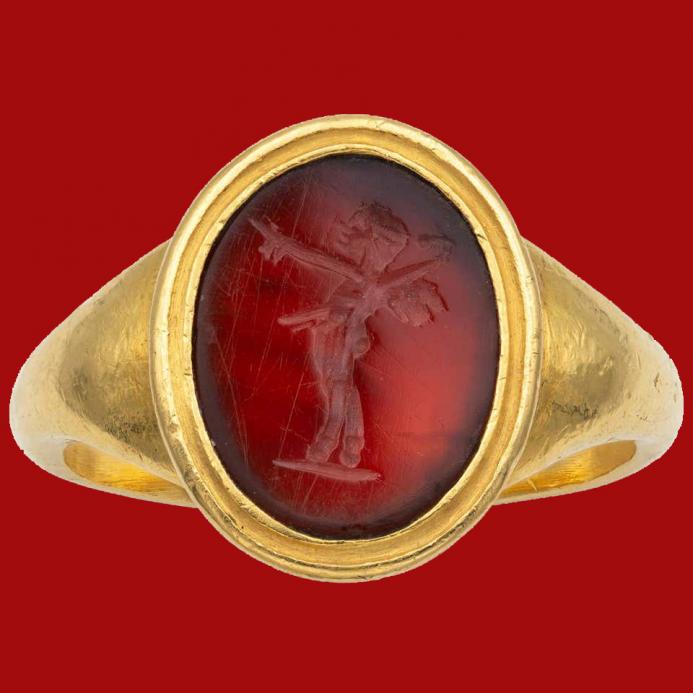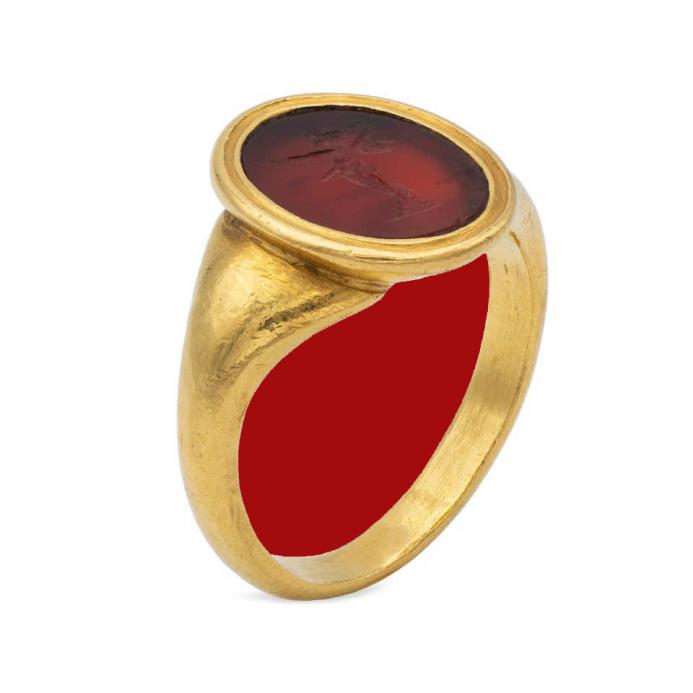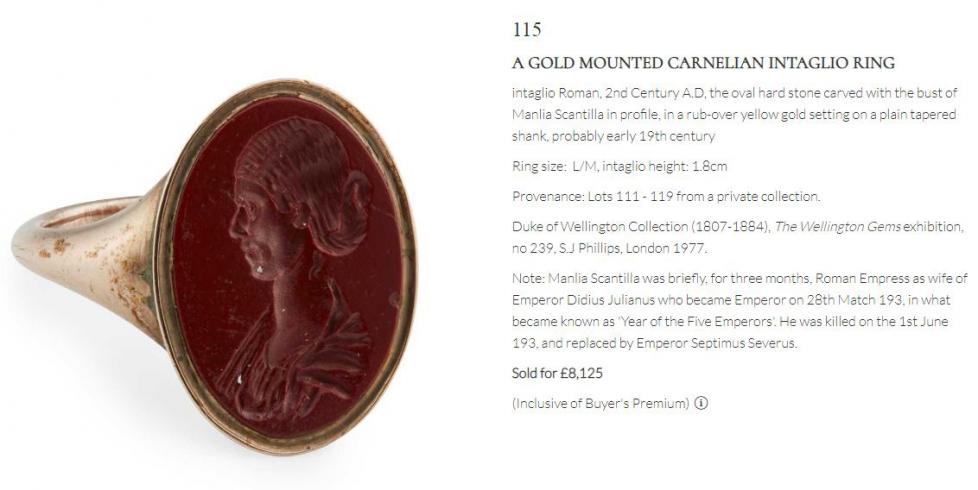A Stunning, Large, Original, Roman Classical Carved Carnelian Intaglio Seal of the Goddess Laetitia . This Amazing Roman Intaglio Could Make A Beautiful Ring With A Bespoke Mount
With the figure of the Goddess Laetitia leaning upon a shield of nine stars, with an anchor at her feet. A delightful object d'art in the typical classical Greco-Roman form, probably mounted in a pinchbeck type mount in Georgian England circa 1770, but the carnelian is probably 1st century bc to 2nd, 3rd century Roman, mounted in a gilded metal oval mount in the 18th century. Roman carved intaglio carnelian stone seals were very popular in the era of the English aristocracy's 'Grand Tours' with many brought back from trips to Rome and mounted as rings or seals in the time of King George IIIrd. Laetitia is the Roman Goddess of joy, gaiety, and celebration, and is especially linked with holidays and festivals. She was often shown with an anchor, as a representation of stability. Laetitia was given several epithets depending on the type of joy the Emperor was attempting to take credit for bringing to the Empire. On coins of the Emperors Gordian III and Gallienus, who both reigned in the mid 3rd century CE, She is Laetitia Augusta, "the Joy of the Emperor", which, in propaganda-style, can be taken to mean "the joy the Emperor brings to the people", though it may also have been a way of announcing the birth of a child into the imperial family. On these She is shown standing in Her typical pose, with a garland in one hand and an anchor supporting the other; The red variety of chalcedony has been known to be used as beads since the Early Neolithic in Bulgaria. The first faceted (with constant 16+16=32 facets on each side of the bead) carnelian beads are described from the Varna Chalcolithic necropolis (middle of the 5th millennium BC). The bow drill was used to drill holes into carnelian in Mehrgarh in the 4th-5th millennium BC. Carnelian was recovered from Bronze Age Minoan layers at Knossos on Crete in a form that demonstrated its use in decorative arts; this use dates to approximately 1800 BC. Carnelian was used widely during Roman times to make engraved gems for signet or seal rings for imprinting a seal with wax on correspondence or other important documents. Hot wax does not stick to carnelian. Sard was used for Assyrian cylinder seals, Egyptian and Phoenician scarabs, and early Greek and Etruscan gems. The Roman Empire was the seat of power and wealth in the Western world for hundreds of years. Because of their impressive span, they were able to trade with cultures throughout the world, not only in Europe, but also in northern Africa.
This gave them access to numerous gemstones which they could use to craft their jewelry. Because of their wealth, they were able to afford many precious and semi-precious stones, as well as detailed artisan craftwork.
We show in the gallery another similar Roman carnelian seal that has been re-mounted in a yellow gold ring mount, it looks spectacular. We show another similar sized that was remounted as a ring in the 19th century, it sold in auction for £8,125.
We also show in the photo gallery a similar Carnelion intaglio seal of Empress Catherine the Great sold recently for just under 30,000 gbp.
Pinchbeck is a durable yellow metal that resembles gold but is made with a combination of copper and zinc—much less zinc than the combo of the same two metals used to produce brass. The formula was developed by Christopher Pinchbeck, a London clockmaker who lived from about 1670 to 1732.
The seal is 32mm x 26mm in mount
Code: 20846
995.00 GBP

